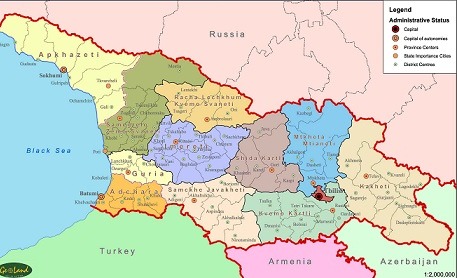The key proposals of bill on Local Self-Government of Georgia

The draft bill of Local Self-Government of Georgia determines the legal, economic, and financial basis for the implementation of the local self-governance in Georgia, as well as the state guarantees, the foundations for the establishment and functioning of the local self-government bodies.
The bill on Local Self-Government of Georgia was developed by the Ministry of Regional Development and Infrastructure and has been submitted to the Parliament for consideration. There are also the public discussions about the draft bill reforms. Here are the key proposals of the bill:
Formation of local self-government cities
The number of self-governing cities will increase as towns with at least 15,000 residents automatically become eligible for the status of "self-governing city. The mayors of these cities will be elected directly by voters. Now there are five "self-governing cities Tbilisi; Kutaisi; Batumi; Rustavi and Poti and only in Tbilisi the mayor is elected directly by voters.
But the bill also makes it possible to grant this status to those towns which fall short of 15,000 in number of residents, but have "a potential of urban attractiveness.
The parliament will have the authority whether to grant this status or not to towns with less than 15,000 residents.
According to the law, the number of "self-governing units (65 at present) will increase. Self-Governing unit is an independent legal entity having local representative and executive bodies, has the authorities set by the present law, its own property and budget.
Authorities of the Self-Governing cities
The representative body of the local self-government on the municipality level will remain Sakrebulo (the Council or Assembly) and the executive body of the local self-government is Gamgeoba (City Hall) and a mayors for self-governing cities.
Sakrebulo is elected for a four-year term and each Sakrebulo will have from 15 to 30 seats depending on the size of municipality.
Tbilisi is an exception where Sakrebulo will still have 50 members.
Like mayors in self-governing towns, gamgeblebi (City Halls heads) will also be directly elected by voters of respective municipalities for a three-year term in 2014 local elections and then for four year term starting from the 2017 local elections.
Mayor/gamgebeli, according to the bill, will have the right to veto legal acts adopted by Sakrebulo, but executive body will have no right to veto municipalitys budget.
According to the draft law, for evey 500 registered voters, one person will be employed at the municipality. More than 14 thousand people are employed at the municipalities.
Borough Councils in Tbilisi
In the capital city Tbilisi, which will have 50-member Sakrebulo as it is now, newly elected bodies, Borough Councils, will be introduced at the neighborhood level. Sakrebulo member can also be elected to the Borough Council. Borders of neighborhoods in the capital city have yet to be defined.
Borough Councils will not have its own budget and they will implement the power of Sakrebulos. The Borough Councils will have the authority to prepare the projects, present the naming proposals of the avenue, highway, street, lane, alley, boulevard, alley, square, garden, park to the Sakrebulo.
Moreover, the Borough Councils have the power of presenting the councils interests in Tbilisis self-government bodies.
Borough Councils members will be elected in four year term like Sakrebulo, by direct and secret voting by the registered voters in the districts. In accordance with the number of registered voters in the districts, the number of Council members will not be less than 10 and more than 20.
The draft bill reads that this model of the city management is similar to the EU countries and its cities like Amsterdam, Rotterdam, Vienna and Tallinn.
Formation of regions
As it is in the acting law, there will be nine territorial administrative units (regions) in Georgia:; Imereti; Guria Kakheti; Mtskheta-Mtianeti; Racha-Lechkhumi and Kvemo Svaneti; Zemo Svaneti; Samegrelo and Samtskhe-Javakheti; Kvemo Kartli and Shida Kartli (administratively breakaway South Ossetia is part of Shida Kartli region).
The governors will also remain appointed by the central government.
But these regions are referred in the bill as "regional unions of municipalities.
"The regional unions of municipalities will have the right to compose the development strategy of the region, the management of roads, and different kinds of cultural bodies and waste management.
The bill also introduces new structure at this regional level, which is called the Council of Union.
These Councils will be composed by representatives from Sakrebulos, which will be led by the Regional Governor. Each Sakrebulo can have from at least three to maximum nine members in the Council depending on number of voters in municipalities.
According to the bill, the regional governor is accountable on the one hand before the central government, which appoints governors, and on the other hand before the Council as well.
The Council will have the right to request the central government to dismiss the governor, but it will remain up to the central government to make the final decision.
The existing two autonomous republics will be maintained in the law. Adjara and Abkhazias autonomous republics have higher level of self-governance than other regions.
 Tweet
Tweet  Share
Share
